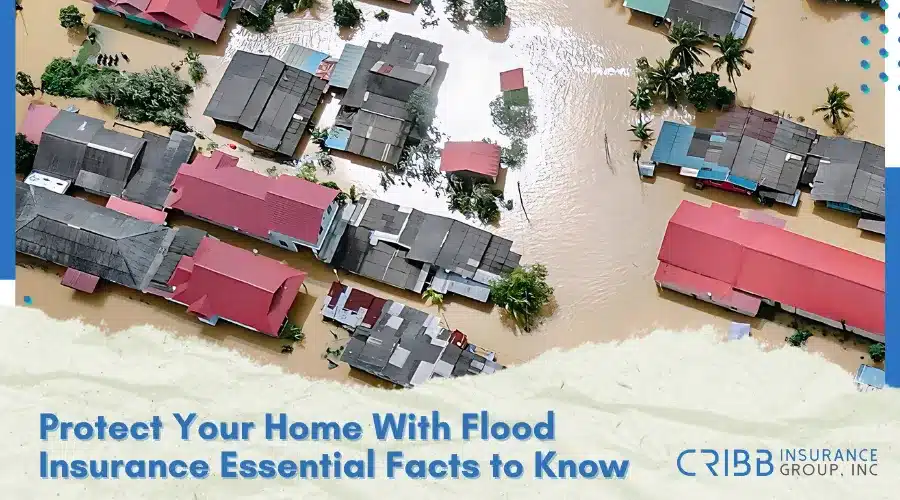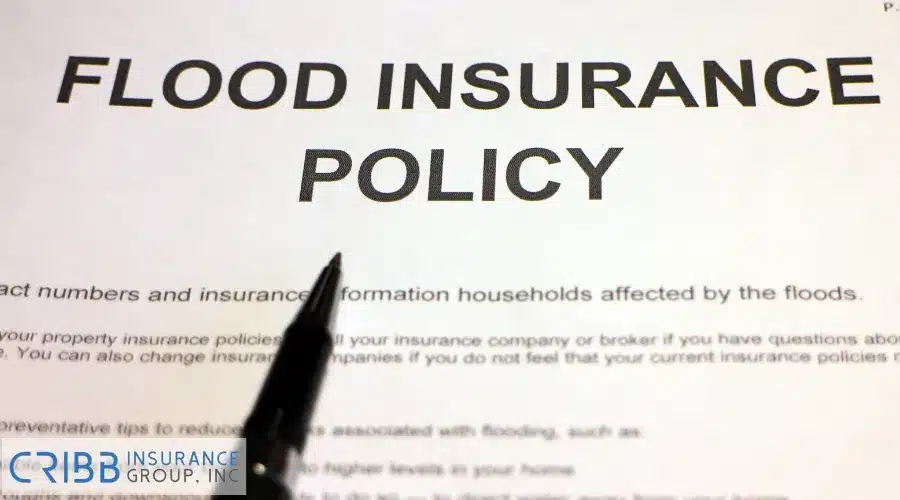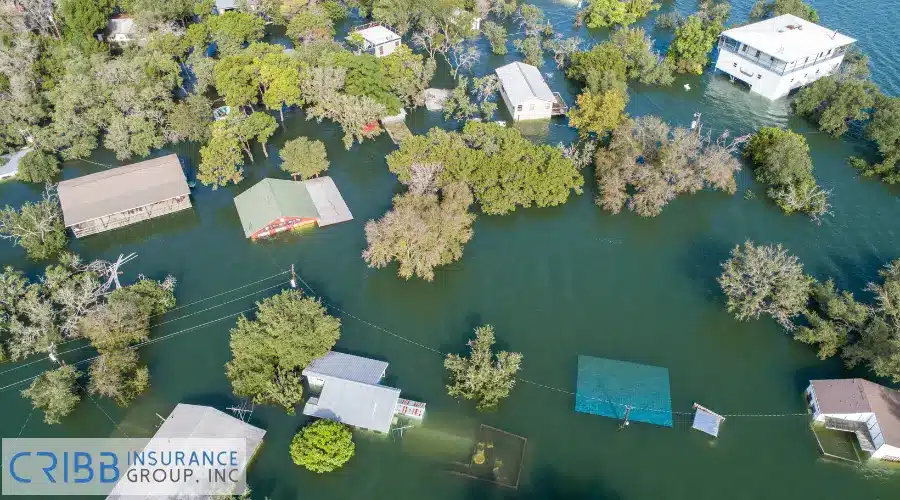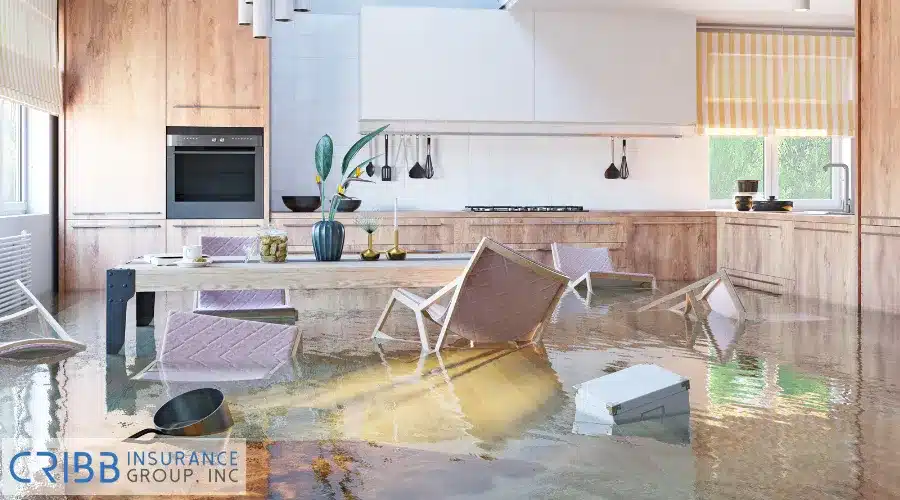Flooding is one of the most common natural disasters, causing significant damage to homes, businesses, and personal belongings yearly. Having flood insurance can be the difference between a manageable recovery and overwhelming financial loss. This specialized insurance covers damages caused by floods, which are not typically included in standard homeowners policies. Whether you’re interested in understanding flood insurance coverage or determining if you need it, this article explores essential facts to help you make informed decisions.

What Is Flood Insurance and Why It Matters
Flood insurance protects your property from the financial burden of water damage caused by floods. Unlike other types of insurance, it specifically addresses damages caused by natural or human-made flooding events. It’s especially important for homeowners in high-risk flood zones, but it can benefit anyone since flooding can happen anywhere.
Understanding the Basics of Flood Insurance
Flood insurance is a separate policy designed specifically for flooding risks. It must be purchased in addition to your standard homeowner’s insurance, as most policies explicitly exclude flood-related damages. This insurance is available through two main sources:
- National Flood Insurance Program (NFIP): Administered by FEMA, it offers government-backed policies for homeowners, renters, and businesses.
- Private Insurance Providers: These companies provide alternative options with potentially higher coverage limits and additional benefits.
Flood insurance policies often have a 30-day waiting period before they become effective, so it’s essential to plan rather than wait until a flood threat arises.
Differences Between Homeowners Insurance and Flood Insurance
Homeowners insurance and flood insurance are distinct in the types of damages they cover. Homeowners insurance typically covers risks like fire, theft, and internal water damage (e.g., a burst pipe). On the other hand, flood insurance is specifically designed for damages caused by external water sources. Key distinctions include:
| Homeowners Insurance | Flood Insurance |
|---|---|
| Covers water damage caused by internal sources like plumbing issues or roof leaks. | Covers damages caused by storm surges, heavy rainfall, or blocked drainage systems. |
| Excludes damages caused by flooding. | Includes both structural damage and damage to personal belongings. |
Homeowners often underestimate their risk of flooding, leading to costly repairs if flood insurance isn’t in place. Recognizing the limitations of homeowners insurance highlights the importance of having a dedicated flood insurance policy.
What Flood Insurance Covers and What It Does Not
Flood insurance provides essential coverage for homeowners, protecting both the structure of your home and your personal belongings from damages caused by flooding. However, there are limits to what is included in these policies. Understanding what is covered and excluded helps you make informed decisions about your insurance needs.
Covered Items: Property and Personal Belongings
Flood insurance policies protect two main areas: the structure of your home and the belongings inside it. Here are some examples of what’s typically covered:
- Building/Dwelling Coverage: This includes foundational elements like walls, plumbing, and electrical systems. For example, if floodwaters damage your water heater, your policy will likely help pay for repairs or replacement.
- Personal Property Coverage: This extends to furniture, clothing, and appliances. If a flood ruins your refrigerator or living room sofa, flood insurance can provide compensation within the policy limits.
Reviewing your policy carefully is crucial to understanding how much coverage is available for each category.

What Is Excluded From Coverage
Flood insurance doesn’t cover everything, and knowing what’s excluded can help you prepare for unexpected costs. Here are common items that aren’t covered:
- Landscaping and Outdoor Areas: Your policy won’t include features like gardens, patios, or fences.
- Vehicles and Motorized Equipment: Cars, motorcycles, and other motorized items are covered under auto insurance, not flood insurance.
- Preventable Mold or Moisture Damage: It will likely be excluded if the damage could have been avoided with proper maintenance.
Understanding these exclusions allows you to explore other coverage options if these items are important to protect.
How to Determine Your Risk for Flooding
Flooding can occur anywhere, but some areas are more susceptible than others. Assessing your flood risk helps you make informed decisions about purchasing flood insurance and protecting your property. Several tools and methods can help identify the likelihood of flooding in your area and prepare you for potential hazards.
Using FEMA Flood Maps and Local Risk Tools
FEMA flood maps are a valuable resource for identifying flood-prone areas. These maps categorize regions based on their flood risk, such as high-risk zones (Special Flood Hazard Areas) or moderate-to-low-risk zones. Here’s how to use FEMA flood maps and other local tools:
- Locate Your Property: Visit FEMA’s Flood Map Service Center and input your address to view your flood zone designation.
- Review Flood Zones: Understand the risk levels in your area. Properties in high-risk zones are more likely to require flood insurance.
- Check Local Resources: Many local governments provide additional tools, such as floodplain maps or historical flooding data, to help residents assess risks more accurately.
These tools give you a better understanding of how likely flooding is in your area, allowing you to take proactive steps like purchasing flood insurance coverage or making flood-resistant upgrades to your home.

Importance of Flood Hazard Assessments
While maps and tools provide general insights, a professional flood hazard assessment offers a more detailed evaluation of your property’s risk. This service involves experts analyzing your property’s elevation, location, and surrounding drainage systems to determine its vulnerability to flooding. Key benefits of a flood hazard assessment include:
- Customized Risk Evaluation: Unlike maps, which offer broad overviews, assessments focus on the specific characteristics of your property.
- Better Insurance Decisions: Knowing your risk level helps you choose the right flood insurance policy and coverage limits.
- Property Improvements: Recommendations from experts can guide you in making flood-proofing enhancements, such as installing barriers or elevating critical systems.
Investing in a flood hazard assessment can save you time and money in the long run by ensuring you’re adequately prepared for potential flooding.
Steps for Filing a Flood Insurance Claim
If your property is affected by flooding, filing a claim with your flood insurance provider is essential to recovering your losses. The claims process can feel overwhelming, but understanding the steps and preparing properly can make it smoother.
How to Document Damages Effectively
Documenting damages thoroughly is crucial when filing a flood insurance claim. Proper records ensure you receive the compensation you’re entitled to. Follow these steps to document damages effectively:
- Take Photos and Videos: Capture clear images and videos of all affected areas, including walls, floors, appliances, and personal belongings. Focus on showing the extent of the damage.
- Create a Detailed Inventory: Make a list of damaged items, noting their condition, approximate value, and receipts if available.
- Save Samples of Materials: For structural damages, retain samples of flooring, carpet, or drywall to show the type and quality of materials affected.
- Avoid Discarding Items: Keep damaged items for inspection unless instructed by your insurance adjuster.
By documenting damages promptly and thoroughly, you build a strong foundation for your insurance claim and avoid unnecessary delays.

Tips to Work With Insurance Adjusters
Insurance adjusters are key in evaluating your claim and determining the compensation amount. Working effectively with adjusters ensures that the process moves forward smoothly and fairly. Here are tips for managing this interaction:
- Provide Complete Documentation: Share all photos, videos, and inventory lists with the adjuster to support your claim. Be organized and ready to answer their questions.
- Accompany the Adjuster During Inspection: Walk through your property with the adjuster to identify specific damages and ensure nothing is overlooked.
- Request a Detailed Report: Ask the adjuster for a copy of their damage assessment and verify that it matches your observations.
- Follow Up on Disputes: If you disagree with their findings, don’t hesitate to discuss concerns or request a reassessment.
By staying proactive and cooperative, you can navigate the claims process effectively and maximize your chances of receiving fair compensation for your losses.
Cost of Flood Insurance and Saving Tips
The cost of flood insurance can vary widely based on several factors, including your location and the coverage you choose. Understanding these factors and exploring ways to lower your premiums can help you secure affordable protection for your home.
Factors Affecting Your Premium Rates
Several factors influence the cost of flood insurance. Knowing these can help you understand your premium and potentially reduce it:
- Flood Zone Designation: Homes in high-risk areas (e.g., Special Flood Hazard Areas) generally have higher premiums. Properties in low- to moderate-risk zones often qualify for lower rates.
- Home Elevation: The higher your home sits relative to the base flood elevation, the lower your risk and your premium. Elevation certificates can provide proof of this.
- Coverage Amount and Deductible: Policies with higher coverage limits and lower deductibles tend to cost more. Balancing these options is key to finding an affordable plan.
- Building Features: Homes with flood-resistant features, such as elevated foundations or flood openings, may qualify for lower premiums.
Understanding these factors can help you evaluate flood insurance options and identify opportunities to minimize costs.
Reducing Costs With Preventive Measures
Taking proactive steps to reduce your flood risk can lead to lower insurance premiums and better protection for your property. Here are some effective measures:
- Elevate Your Home: Raising your home above the base flood elevation can significantly lower your risk of flooding and reduce premiums.
- Install Flood Vents: Adding vents to your foundation allows floodwaters to flow through instead of building pressure, minimizing structural damage.
- Floodproof Critical Systems: Elevate electrical panels, HVAC systems, and water heaters above potential flood levels.
- Improve Drainage Around Your Property: Ensure that gutters, downspouts, and landscaping direct water away from your home to reduce the risk of flooding.
Investing in these measures reduces the cost of flood insurance and helps protect your home from potential damage, offering long-term savings and peace of mind.

Why Flood Insurance Is a Smart Choice for Bentonville Homeowners
Flood insurance is essential for protecting your property from the unpredictable risks of flooding. Whether you live in a high-risk zone or an area with occasional storms, having the right coverage can save you from costly repairs and financial stress. Policies tailored to your home’s needs ensure peace of mind regardless of season.
Cribb Insurance Group Inc has served the Bentonville, AR community with trusted insurance solutions. With a deep understanding of local risks and the best options available, the team is here to guide you in selecting a flood insurance plan that provides maximum protection for your home and belongings.
Frequently Asked Questions
How can I find affordable flood insurance plans?
Compare policies from the National Flood Insurance Program (NFIP) and private providers to find affordable flood insurance. Look for policies that match your coverage needs without exceeding your budget. Additionally, installing flood-resistant features in your home may qualify you for discounts. Speak with local agents familiar with Bentonville, AR, for personalized options.
Are there penalties for not having flood insurance?
There are no direct penalties for not having flood insurance unless required by your mortgage lender. However, if your property is damaged by flooding, you’ll bear the full financial burden of repairs. Not having insurance could lead to significant losses for homeowners in flood-prone areas.
Does flood insurance cover temporary living expenses?
Most standard flood insurance policies do not cover temporary living expenses like hotel stays. However, some private providers offer coverage for additional living expenses. Check with Cribb Insurance Group Inc to explore enhanced options that may include these benefits.
Can I customize my flood insurance policy?
While policies through NFIP have standard terms, private providers often allow for customization. This can include higher coverage limits or additional benefits like coverage for temporary housing or detached structures. Review options with an agent to tailor a plan that fits your needs.
How long does it take for a policy to become active?
Flood insurance policies usually have a 30-day waiting period before they take effect. However, exceptions may apply for newly purchased homes or policies from private insurers. Make sure to plan to ensure coverage is active before the risk of flooding arises.
Get Comprehensive Flood Insurance With Cribb Insurance Group Inc
Protect your Bentonville home today with customized flood insurance from Cribb Insurance Group Inc. Call (479) 286-1066 to explore your options and get a policy tailored to your needs. Don’t wait, secure your coverage before the next storm hits.





